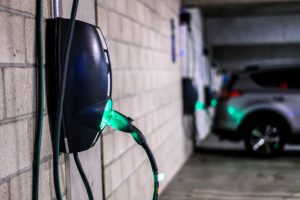Why do EVs suffer in the winter?
Lithium-ion batteries, which power EVs, operate most efficiently between 60 and 80 degrees Fahrenheit. The chemical reactions that produce the electrons needed to supply the battery’s current slow down as the temperature drops below about 40 degrees, which causes the battery to produce less current.
The majority of vehicles address this problem by employing a battery thermal management system to warm up the battery, however unlike an internal combustion engine, which produces heat on its own, an electric vehicle (EV) must draw energy from the battery to do so. This implies that there is less power available to turn the wheels.
How much might the cold affect my EV’s mileage range?
The car club AAA evaluated a variety of EVs, and all of them had average ranges of more than 100 miles per charge. A climate-controlled dynamometer (a type of automotive treadmill) was used to test the vehicles at two different temperatures: 20 degrees Fahrenheit and 75 degrees.
According to the study, when the vehicles didn’t have a heater, the average range decreased by 12% in the cooler temperatures. Driving range decreased by 41% on average when cabin warmers were turned on.
However, it’s important to keep in mind that cold weather also has an impact on how fuel-efficient internal combustion engine (ICE) vehicles are.
And a truly intriguing finding, that lower temperatures are actually better for electric vehicle payback! This is due to the fact that as the temperature drops, gasoline costs per mile rise more than electricity costs per mile do, resulting in power savings of 14.8 cents per mile on average at 0 °F as opposed to 13.9 cents per mile at 32 °F.
Which EVs are the best at navigating icy roads?
Moving on from the battery for a bit, it’s crucial to think about how your EV will handle if you need it to tackle real winter conditions.
Five EVs were put through a rigorous real-world test by the EV Association of Norway, which involved driving them on a 700-kilometer circle (about 434 miles) from Oslo to the popular ski resort of
All electric vehicles have excellent grip and control thanks to their electric motors and computerized controls, which makes for safe handling in winter conditions.
Winter driving tips for electric vehicles
1. the pressure in your tires
As the temperature drops, the pressure in the tires decreases, increasing rolling resistance and reducing mileage. It’s a good idea to check your tire pressure once a month, but it’s especially important now that the seasons bring along significant changes in outdoor temperature. By doing this, you might save up to 13% of your typical range.
2. Utilize pre-timed heating systems to your advantage.
Many EVs are equipped with a pre-timed heating system that may be set to turn on just before you leave while the battery is still charging. This will bring the battery to its optimum operating temperature (a process called as preconditioning) and warm up the cab, so you won’t need to turn on the heating while driving. Preconditioning before you leave can increase your range by 10% to 15%.
In some EVs, like Teslas and the brand-new Jaguar I-Pace electric, you can even use an app to remotely control the pre-timed warmers.
Preconditioning will draw more power than a 120V level 1 charger can supply, so make sure the car is plugged into a 240V level 2 power source during this operation.

3. Utilize garages with indoor parking wherever possible.
If you are unable to accomplish that, attempt to park so that you will receive direct sunshine throughout the day. When you go back in your car later, you’ll have a warmer battery and interior – for free!
4. Reduce your use of the cabin heater.
Therefore, turn up the heat in your cabin, buy some cozy driving gloves, and keep your jacket on.
Additionally, it will benefit you to drive with heated seats and steering wheels rather than cabin warmers because they consume a lot less battery power.
5. Drive cautiously.
The way you drive your EV has an impact on your mileage range, regardless of the weather. Driving at fast speeds, abrupt acceleration, and stopping all reduce battery life. And doing so will keep you and your passengers safer on those icy roads, in addition to improving your mileage range.
You can use your EV’s regenerative braking technology to recover energy and store it back in the battery by anticipating the need to brake and avoiding hard braking.

6. Use the eco setting
Every EV’s eco-mode serves a somewhat different purpose, but generally speaking, they all aim to reduce power consumption and improve mileage by cutting back on the energy supply to the drive motor and high-energy functions like cabin heaters.
In fact, using eco-modes in your automobile can make it safer to drive in the cold. Because the automobile accelerates more slowly with less power going to the motor, there is less chance of tire spin on icy or snowy roads.
